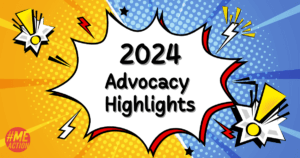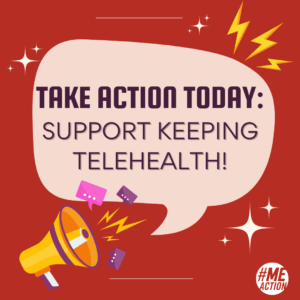Senator asks medical research council about ‘remarkably small amount of funding since 2000’ and if they are funding GET or CBT for ME/CFS. This is the third article in the series, here is the first and second.
Australia has spent just $1.6 million since 2000 on research into ME and CFS, the Australian Department of Health told a Senate budget estimates hearing this week. This figure was revised downward after Senator Scott Ludlam asked the Department to look into it. Ludlam said ‘about two-thirds of the funding appears to be going to into research that, however worthy, actually has nothing at all to do with ME/CFS.’
“Can you correct either the record or point out how this research is directly relevant to the questions that I asked?”
Ludlam said Health bureaucrats sharply revised down estimates of how much research funding goes into trying to understand Myalgic Encephalomyelitis / Chronic Fatigue Syndrome (ME/CFS). They then clarified that there is no other Commonwealth support out there, either for people dealing with this condition, or for GPs. It is time this changed.
Professor Anne Kelso, CEO of the National Health and Medical Research Council (NHMRC, part of the Department of Health) identified four grants; two studies and two fellowships.
- ‘A prospective study of the psychiatric & medical characteristics of post-infective fatigue & chronic fatigue syndrome’, (simplified title “Do some chronic fatigue states result directly from infectious illnesses?”), led by Prof Ian Hickie at University of New South Wales ($500,000) in 2001-2005
Presumably this was for the ‘Dubbo’ study, published in 2006, which followed a group of people diagnosed Epstein-Barr Virus, Ross-River virus or Coxiella burneti/Q Fever to see who developed a prolonged illness (chronic fatigue syndrome).
- ‘Respiratory and neurological health, symptoms and chronic fatigue syndrome in Australian Gulf War veterans’, led by Dr Helen Kelsall at Monash University ($58,000) [according the Australian War Memorial, 1800 Australians were deployed] in 2003-2004
- Two five-year fellowships at the University of NSW for Prof Andrew Lloyd ($1,065,000) from 2008-2017
Kelso added that Lloyd has ‘had a long standing interest in ME/CFS’. Lloyd was one of the authors of the Dubbo study.
Lloyd’s presentation and his involvement in the University of NSW’s Fatigue Clinic both show his support for in cognitive behavioural therapy and graded exercise therapy as a treatment for chronic fatigue syndrome.
Also, Lloyd’s attention has turned to hepatitis C (“90 percent of my work has nothing to do with CFS”) and hepatitis C was in the NHMRC fellowship information on their website, the same fellowship the NHMRC is claiming is entirely for ME/CFS research.
Is Australia funding CBT or GET studies?
Ludlam asked if any of those four research papers were recommending or investigating cognitive behavioural therapy or graded exercise therapy. Kelso said she could provide that information and took the question on notice.
Emerge Australia, the peak group for Australian patients, said people with ME/CFS are entitled to better support, care and respect and that the lack of good quality research needs to be challenged.
“We believe that funding should go towards biomedical research which is uncovering important new findings. There is no good evidence to support the use of graded exercise therapy or cognitive behavioural therapy and there is important emerging evidence on genetic and immune markers for the condition, so we ask the Department of Health not to waste precious research dollars on those studies,” said Sally Missing, Emerge’s President.
Ludlam credited Emerge, ‘they do remarkable work’, and asked about federal funding to help them advocate for Australians.
“[Emerge] are getting by on basically bugger-all. A little bit of funding from the Victorian government, which I would acknowledge. Nothing at a Commonwealth level.”
Up to 242,000 Australians have chronic fatigue syndrome (including 94,000 with Myalgic Encephalomyelitis which is a narrower definition) and some are severely ill, unable to leave their bedroom or home and requiring help with daily activities of life. In the hearing, Ludlam said around 46 per cent are housebound and 6 percent bed bound.
“A huge cohort of people and there’s not even an accurate diagnosis…when are we going to start seeing some action?”
Setting up a Clinical Advisory Group and training doctors
Ludlam raised the question of a Clinical Advisory Group for the illness and asked the Department for suggestions.
“I’m looking for anything, any suggestions or bright ideas from anyone at the table or in the room…because there is nothing going on,” Ludlam said. “What do we need to do to jump start support for these people?”
Senator Fiona Nash was quiet for a moment before saying the Department would take the question on notice.
The Health Department was asked about why there is no federal funding for support of people with the condition, advice about medical treatments, training of medical and allied health staff and dissemination of information. The Department took this question on notice as well.
Looking to the USA’s National Institutes of Health
In encouraging news, Kelso said she has been discussing the importance of research for this illness with the director of the USA’s National Institutes of Health, Dr Francis Collins. Kelso repeated Collins’ words to her, “it is time for a significant effort to understand it”.
“It is a very important syndrome, poorly recognised and it is clearly not understood.”
Kelso said the NIH’s recent announcements about research was excellent news because of the NIH’s budget and capability and would be an important stimulus for the field, potentially also for Australia, and ‘we hope for great things to come from that research’.
Kelso said there would be a new process for funding research which may help fields that are not getting many investigator-initiated applications. She also said letters from the public fed into consideration of priorities in the decision-making process.
Here is a video segment of the late night hearing (8:35 minutes long, no closed captions) and here is a transcript (scroll to the end as it was the last item discussed) . A follow-up to this story will be written when the Health Department provides answers to the ‘questions on notice’.
Follow @sashanimmo and @MEActNet for updates.





7 thoughts on “Australian Health Department pins its hopes on NIH research”
Thanks for this summary of Senator Ludlam’s follow up questions at Senate Estimates, Sasha. It is so heartening to see him take up our cause. Emerge has done a wonderful job of ensuring that he is fully informed about the situation for people with ME/CFS in this country.
It really was beyond the pale for Anne Kelso to include Andrew Lloyd’s two fellowships as examples of NHMRC-funded research that is specifically focussed on ME/CFS. I’m appalled that this misinformation (or outright lying) is allowed to stand.
Senator Ludlam has proposed some good ideas, and hopefully NHMRC and the Dept of Health will come back to him with some tangible actions.
Looking forward to the next instalment in May!
You are welcome Simone. The NHMRC does need to look more closely into the fellowships.
Thank you Sasha Nimmo for this excellent summary. Let’s hope this leads to significant change in Australia. And thank you Senator Ludlum. So grateful for your support.
Anna
I hope so too!
Thousands of people life’s devastated by ME. An American study by their NIH, is going to look at 40 people, is that enough?? The cost of ME to Austrailia per year is 4 billion dollars!! Surely Canberra can do more than get excited by the USA planning to study 40 people. We have world class researchers at The National Centre for Neuroimune and Emerging Diseases, on the Gold Coast. When is Canberra going to provide health care and resarch to people with ME??? Over 94,000 people devastatingly ill.
Hi Adrian,
When you say ‘Canberra’, you mean the federal government who is making the decisions about funding. The federal government are your elected representatives from all over Australia, get in contact with them!
I’m a Canberran and am doing as much as I can, but I don’t think you mean me when you say ‘Canberra’ do you? 😉
It looks to me as if they just don’t seem to care. The lack of enthusiasm to even answer the questions is shocking!!
Comments are closed.